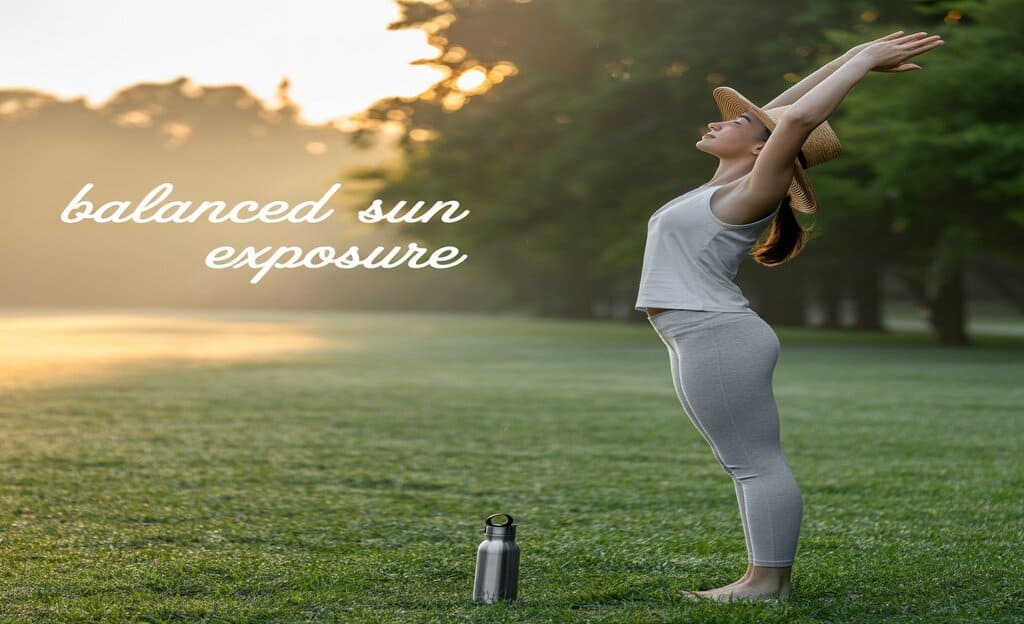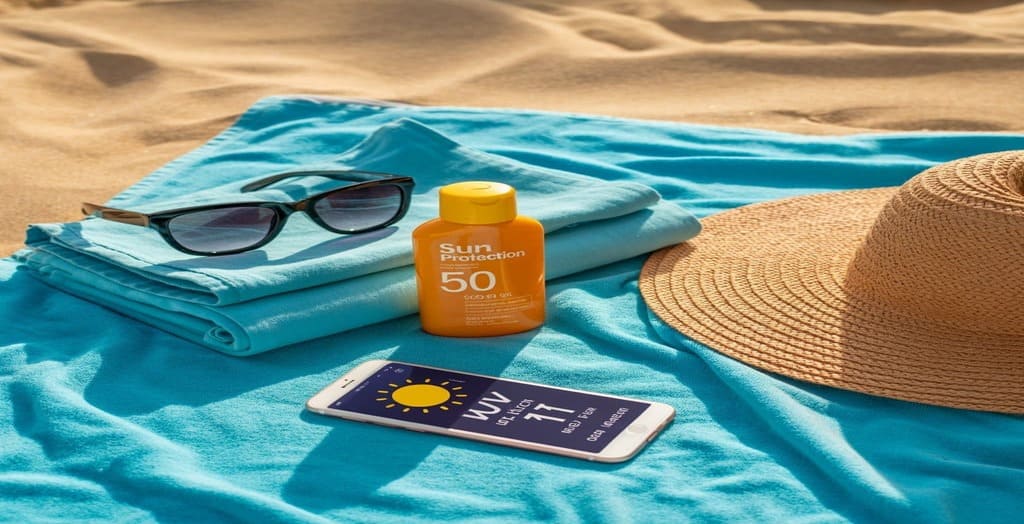
Introduction
The summer sun is a powerful force of nature. It provides light, warmth, and energy that influence everything from ecosystems to human health. While moderate sunlight exposure can be incredibly beneficial—supporting vitamin D synthesis, enhancing mood, and improving sleep cycles—overexposure without proper protection can lead to serious health risks such as sunburn, skin cancer, and premature aging.
This comprehensive guide explores the dual role of sunlight in summer—its preventive health strategies and scientifically backed benefits. Through insights from leading researchers, medical journals, and popular resources like Wikipedia and Harvard Health, we will uncover how to safely enjoy the sun without compromising your health.

Part 1: Understanding Sunlight – What Happens When We’re Exposed
Sunlight comprises several types of electromagnetic radiation, but it is the ultraviolet (UV) spectrum—specifically UVA and UVB rays—that has the most significant biological effects on the skin.
🔬 Types of UV Radiation
| Type | Penetration | Effects on the Body |
|---|---|---|
| UVA | Deep into dermis | Causes skin aging, DNA damage |
| UVB | Affects epidermis | Triggers vitamin D synthesis, also causes sunburn |
| UVC | Blocked by ozone layer | No effect on humans on Earth |
📚 According to Wikipedia, UVB rays account for just 5% of total UV radiation but are primarily responsible for vitamin D production and sunburn.
Part 2: The Health Benefits of Moderate Sun Exposure
Despite its risks, sunlight offers several medically proven benefits when approached responsibly.
🌞 1. Natural Vitamin D Production
Vitamin D is often called the “sunshine vitamin” because UVB rays convert cholesterol in the skin into this essential hormone.
🧬 A 2023 meta-analysis published in The Lancet confirmed that moderate sun exposure significantly boosts vitamin D levels, improving bone health, immune response, and mental well-being.
✅ Key Health Benefits of Vitamin D:
- Supports calcium absorption for strong bones.
- Enhances immune defenses against respiratory infections.
- Reduces risks of depression and seasonal affective disorder (SAD).
- Lowers incidence of type 2 diabetes and hypertension.
😃 2. Improved Mood and Mental Health
Exposure to natural light stimulates the production of serotonin, the hormone responsible for mood elevation.
💡 According to Harvard Health Publishing, people exposed to natural light for at least 30 minutes per day report higher serotonin levels, fewer mood swings, and better sleep regulation.
💤 3. Better Sleep Quality
Sunlight helps regulate your circadian rhythm, the internal body clock that governs sleep and wake cycles.
🩺 The National Institutes of Health (NIH) explains that morning sunlight exposure (within 1 hour of waking) is crucial for melatonin suppression, enhancing alertness during the day and improving sleep at night.
Part 3: The Risks of Excessive Sun Exposure
While sunlight can be beneficial, excessive UV exposure is a leading contributor to skin damage and disease.
🚫 1. Sunburn and DNA Damage
Sunburn is a visible sign of cellular injury caused by UVB radiation. Prolonged sunburns increase the risk of genetic mutations in skin cells.
🔬 A 2022 study in The Journal of Investigative Dermatology found that repeated sunburns before age 20 increase melanoma risk by over 50%.
🚫 2. Premature Skin Aging
UVA rays degrade collagen and elastin, resulting in wrinkles, sagging skin, and hyperpigmentation.
🧴 Dermatologist Dr. Whitney Bowe emphasizes in Dermatology Times that UVA exposure accounts for 90% of visible aging signs on sun-exposed skin.
🚫 3. Skin Cancer
Excessive exposure to UV rays is the most preventable cause of non-melanoma and melanoma skin cancers.
📖 According to The Skin Cancer Foundation, 1 in 5 Americans will develop skin cancer by age 70, with UV exposure being the leading risk factor.

Part 4: How to Protect Yourself in Summer
🧴 1. Use Broad-Spectrum Sunscreen
A broad-spectrum sunscreen protects against both UVA and UVB rays.
✔️ What to Look For:
- SPF 30 or higher
- Ingredients: Zinc oxide, Titanium dioxide, Avobenzone
- Water-resistant formula
🔁 Reapply every 2 hours and after sweating or swimming.
👒 2. Wear Protective Clothing and Accessories
| Protection | Description |
|---|---|
| UPF Clothing | Fabrics rated for UV protection |
| Wide-Brimmed Hats | Shields face, neck, and ears |
| UV-blocking Sunglasses | Protects eyes and surrounding skin |
📘 Wikipedia notes that UPF 50+ clothing blocks 98% of UV rays, making it more effective than typical fabrics.
🌳 3. Avoid Peak Sun Hours
UV radiation peaks between 10:00 a.m. and 4:00 p.m. Seek shade or indoor spaces during this window.
🕶️ The World Health Organization (WHO) recommends limiting direct sunlight during peak hours and checking the UV Index daily.

Part 5: Balance Is Key – Guidelines for Safe Sun Enjoyment
🧭 How Much Sunlight Is Enough?
| Skin Tone | Recommended Sun Exposure | Frequency |
|---|---|---|
| Fair Skin | 10–15 minutes | 3–4 times/week |
| Medium Skin | 15–25 minutes | 3–4 times/week |
| Dark Skin | 25–40 minutes | 4–5 times/week |
🧪 The British Association of Dermatologists explains that skin tone, geographic location, and season affect how much sunlight is needed for optimal vitamin D production.
Part 6: Debunking Common Myths About Sunlight
| Myth | Reality |
|---|---|
| “You don’t need sunscreen on cloudy days” | 80% of UV rays still pass through clouds |
| “Tanning is healthy” | Tanning is a sign of DNA damage |
| “Darker skin doesn’t need sun protection” | All skin tones are vulnerable to UV damage |
| “Vitamin D supplements are always enough” | Natural sunlight is the most efficient source |
Part 7: Sunlight and Children – Special Considerations
Children’s skin is thinner and more sensitive to UV damage.
- Infants under 6 months should be kept out of direct sunlight.
- Apply mineral-based sunscreen for children over 6 months.
- Encourage sun-safe habits early with hats, sunglasses, and shaded play areas.
🩺 The American Academy of Pediatrics stresses that early sunburns significantly increase the risk of skin cancer in adulthood.
Conclusion: Embrace the Sun, But Do It Wisely
Sunlight is essential to human health, offering a range of benefits from stronger bones to brighter moods. Yet, the sun is a double-edged sword: excessive exposure can cause irreversible skin damage, while measured exposure supports health and vitality.
To enjoy summer safely:
- Seek balance between sunlight and shade.
- Use proper protection like sunscreen and UV clothing.
- Time your exposure wisely and stay hydrated.
By understanding both the risks and rewards, you can make informed decisions that protect your health and enhance your well-being throughout the summer months.
References
- Ultraviolet radiation – Wikipedia
- Harvard Health Publishing (2023) – “Sunlight and Mental Health”
- The Lancet (2023) – “Vitamin D and Immune Health: A Global Review”
- The Journal of Investigative Dermatology (2022) – “UVB Exposure and Melanoma Risk”
- The Skin Cancer Foundation – “Skin Cancer Facts & Prevention”
- Dermatology Times – “How UVA Affects Skin Aging”
- National Institutes of Health (NIH) – “Circadian Rhythms and Light Exposure”
- British Association of Dermatologists – “Safe Sun Practices by Skin Tone”
- World Health Organization (WHO) – “Global UV Index”
- American Academy of Pediatrics – “Sun Safety in Children”






